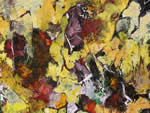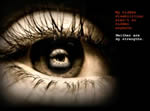Serendip is an independent site partnering with faculty at multiple colleges and universities around the world. Happy exploring!
Serendip Home
Welcome to Serendip's Exchange!
Welcome to Serendip, a playground, including resources and forums, for those who ask questions without boundaries. Glad you stopped by. Need a few pointers to find your way around?
![]() Looking for “the answer” to a question? There are plenty of websites out there which will tell you what to think. Serendip instead aims at helping you to think for yourself, and in the process of discovery to formulate new questions and new explorations.
Looking for “the answer” to a question? There are plenty of websites out there which will tell you what to think. Serendip instead aims at helping you to think for yourself, and in the process of discovery to formulate new questions and new explorations.
Nothing on Serendip is "authoritative", but there is lots here that you can learn from and contribute to. See (and click on) the material below and to the right for recently added discussions. Click here for publishing guidelines.
Consortium for Excellence in Teacher Education
 The Consortium for Excellence in Teacher Education is building a network for excellence in STEM teacher education at liberal arts institutions. Beginning with the conference hosted at Bryn Mawr College, come join the CETE discussion blog.
The Consortium for Excellence in Teacher Education is building a network for excellence in STEM teacher education at liberal arts institutions. Beginning with the conference hosted at Bryn Mawr College, come join the CETE discussion blog.
The Breaking Project
 Read and join The Breaking Project, an evolving space for publishing and exploring writing, artwork, and film that come from experiences of Breaking: choosing radical change in life and thought. The word “Breaking” turns up everywhere: breaking with (a faith, an organization), breaking up (a partnership, an affair), breaking away (from family, tradition, oppression), breaking down (to analyze, to examine, to see component parts, to fall apart). “Breaking” signals things coming apart so that new combinations become possible. Breaking is the start of revision. How do people do it? What is it good for? How much does it (have to) hurt? What are we learning about how to be ready for it, even to celebrate it?
Read and join The Breaking Project, an evolving space for publishing and exploring writing, artwork, and film that come from experiences of Breaking: choosing radical change in life and thought. The word “Breaking” turns up everywhere: breaking with (a faith, an organization), breaking up (a partnership, an affair), breaking away (from family, tradition, oppression), breaking down (to analyze, to examine, to see component parts, to fall apart). “Breaking” signals things coming apart so that new combinations become possible. Breaking is the start of revision. How do people do it? What is it good for? How much does it (have to) hurt? What are we learning about how to be ready for it, even to celebrate it?
In the pages to come, you will read, and find welcome to contribute your own, stories, analyses, and poems of breaking by the amazing people who took up the invitation to join this project, or who found out about it by word of mouth. You will also find writing and teaching prompts, and are invited to add your own in this online community of making meaning, art, and change.
The Brain Constructing the World
 Synesthesia and Perception is an exhibit resulting from a collaboration between Serendip and the Painted Bride Art Center in Philadelphia. The installation of the Synesthesia exhibit ran at the Painted Bride from April 3rd to May 16th 2009, and Serendip is delighted to host the virtual installation as a permanent exhibition.
Synesthesia and Perception is an exhibit resulting from a collaboration between Serendip and the Painted Bride Art Center in Philadelphia. The installation of the Synesthesia exhibit ran at the Painted Bride from April 3rd to May 16th 2009, and Serendip is delighted to host the virtual installation as a permanent exhibition.
More than 20 artists with their work are profiled, and visitors are invited to post their comments. A new starting point for discussion on Serendip, Perception: From Five Senses Through Synesthesia and Beyond, describes the brain's role in what we think of as our "senses."
Exploring Disability: Images and Thoughts
 David Alan Feingold is a doctoral student in disability studies at National-Louis University, "a school social worker by profession and an artist by necessity." The images on this page reflect as well David's experiences with closed head injury, bipolar disorder, and ADHD. They are made available on Serendip as contributions to further conversation about human diversity, brain and behavior, mental health, and disabilities and cultural evolution.
David Alan Feingold is a doctoral student in disability studies at National-Louis University, "a school social worker by profession and an artist by necessity." The images on this page reflect as well David's experiences with closed head injury, bipolar disorder, and ADHD. They are made available on Serendip as contributions to further conversation about human diversity, brain and behavior, mental health, and disabilities and cultural evolution.
Ways of Making Sense in the World:
From Primal Patterns to Deterministic and Non-Deterministic Emergence
 Simple computer models describe, illustrate, and compare three general approaches to making sense of the world. One approach presumes that primal spatial patterns are the explanation for all organization, and that these patterns need to be uncovered by removing obscuring disorganization. A second approach, which we will call "deterministic emergence", treats both pattern and disorganization as the outcome of historical processes that follow simple and well-defined deterministic rules, and seeks to determine the starting conditions and rules which yield the current observations. A third approach, which we call "non-deterministic emergence", similarly adopts an historical perspective but identifies disorganization as largely the result of random (non-deterministic) processes that are a starting point as well as a continuing contributer to the historical process. From this third perspective, the task is to understand how random processes can yield varying degrees of organization.
Simple computer models describe, illustrate, and compare three general approaches to making sense of the world. One approach presumes that primal spatial patterns are the explanation for all organization, and that these patterns need to be uncovered by removing obscuring disorganization. A second approach, which we will call "deterministic emergence", treats both pattern and disorganization as the outcome of historical processes that follow simple and well-defined deterministic rules, and seeks to determine the starting conditions and rules which yield the current observations. A third approach, which we call "non-deterministic emergence", similarly adopts an historical perspective but identifies disorganization as largely the result of random (non-deterministic) processes that are a starting point as well as a continuing contributer to the historical process. From this third perspective, the task is to understand how random processes can yield varying degrees of organization.
Read More and Experiment with the Models
Making Sense of Understanding:
The Three Doors of Serendip
 The Three Doors of Serendip is an exploration of an alternate way to try and make sense of "understanding", one which roots understanding not in a "truth out there" but rather in the ongoing process of finding ways to make sense of one's own experiences (and those of others), in "getting less wrong" rather than being "right".
The Three Doors of Serendip is an exploration of an alternate way to try and make sense of "understanding", one which roots understanding not in a "truth out there" but rather in the ongoing process of finding ways to make sense of one's own experiences (and those of others), in "getting less wrong" rather than being "right".
The Three Doors of Serendip is based on a game known variously as "The Monty Hall Dilemma", "Let's Make a Deal", and "The Three Door Problem" (see Resources).


